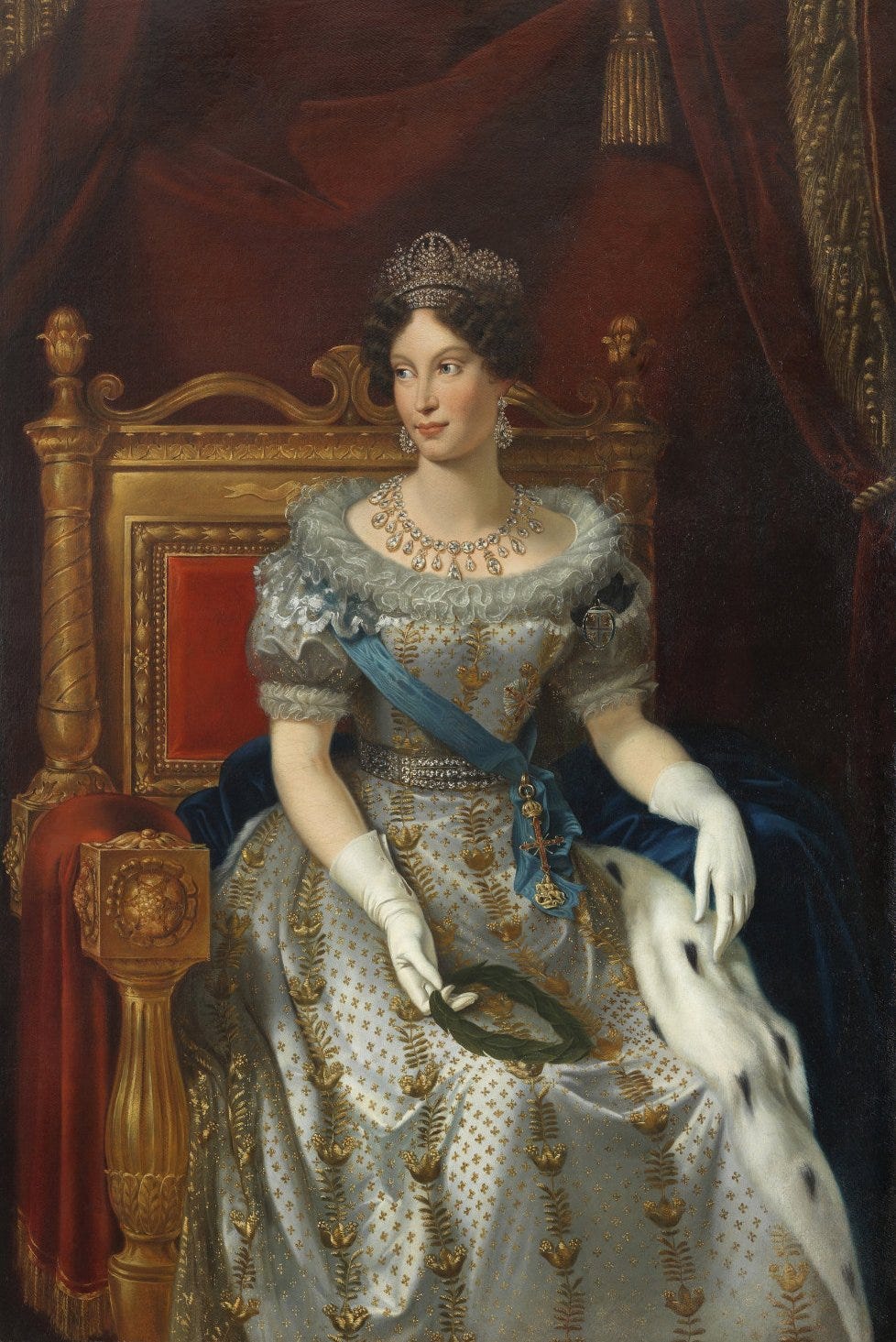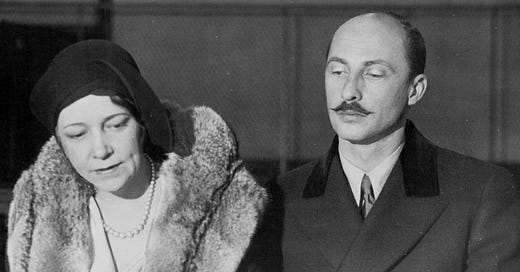"Two Kinds of Habsburgs": The Napoleon Diamond Necklace (Part 2)
In the final part of our series on the notorious attempted sale of a Napoleonic jewelry treasure, the diamond necklace is recovered—and an archduke is indicted
Last week, I began telling the story of one of the most infamous chapters in the life of the Napoleon Diamond Necklace, the glittering jewel commissioned by Napoleon Bonaparte for his second wife, Empress Marie Louise. When its Habsburg owner tried to sell the piece to support her life in exile in 1930, a scandal ensued—and one of her cousins was indicted for fraud by the Manhattan District Attorney. Today, the conclusion of our series begins with the transaction that went terribly wrong.
If you’re a royal woman, raised amid nineteenth-century splendor and then faced with reduced circumstances late in life, how do you go about selling your jewels?
For Archduchess Maria Theresa of Austria, sister-in-law of Emperor Franz Joseph I, the answer was hiring representatives to do the job for you. By 1929, the Habsburgs had lost their imperial throne, and Maria Theresa was living in increasingly genteel poverty in Austria. It was time, she decided, to secure her future by letting go of a magnificent royal jewel that she’d loved and worn since her wedding four decades earlier. The piece was a diamond necklace, commissioned by Napoleon Bonaparte in 1811 for his second wife, Marie Louise of Austria. The empress had just given birth to their only son, and Nitot had crafted a magnificent diamond jewel to celebrate the baby prince.

Marie Louise managed to hang on to the diamond necklace through the tumult of exile, and when she died, it was bequeathed to her Habsburg relatives in Austria. In 1873, it was offered by one of them, Archduke Karl Ludwig, to his new wife, Infanta Maria Theresa of Portugal, as a wedding present. Archduchess Maria Theresa also found a way to keep the incredible, historic jewel in her possession as the empire around her descended into war and disarray.
But by 1929, with money getting tight, Maria Theresa decided that it was time to let the necklace go. Selling a historic jewel can be a complicated process, especially one valued in 1929 at a cool $400,000. (That would be something in the neighborhood of $7 million today.) To expedite the matter, Maria Theresa enlisted the services of a man named Col. Charles F. Townsend, who provided references with the British Foreign Office stating that he was a former intelligence officer and had served in Egypt. As a way to make inroads with prominent clients, he planned to work alongside a woman with an alleged royal background: Princess Gervée Baronte, supposedly a member of an Italian princely family.
Maria Theresa made a deal with the couple through her chamberlain, signing a power of attorney document that authorized them to serve as her agents and sell the necklace on her behalf. Maria Theresa handed over the necklace to Townsend, who already had a high-ranking buyer in mind: King Fuad I of Egypt. After all, Townsend had spent time in Egypt and perhaps knew how to market the jewel to its ruler. But Fuad was allegedly not interested in paying the high asking price for the necklace—he reportedly offered $200,000, almost half the appraised value of the piece, and was kindly rejected—so Townsend returned the jewel to the Archduchess in Vienna.
Three months later, Maria Theresa received a letter from Townsend, who explained that he felt he would be better able to find a buyer for the historic necklace in the United States, where royal status has always offered both people and things a bit of extra sheen. Maria Theresa agreed to the plan and sent the necklace by registered mail to Townsend, who took it with him to America.
Keep reading with a 7-day free trial
Subscribe to Hidden Gems to keep reading this post and get 7 days of free access to the full post archives.




